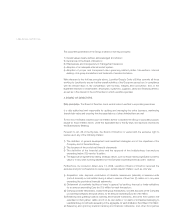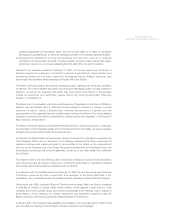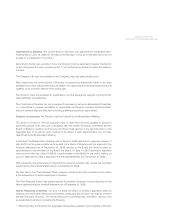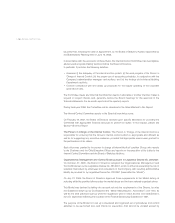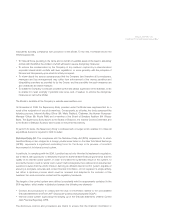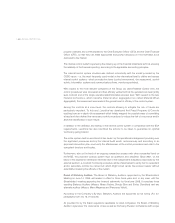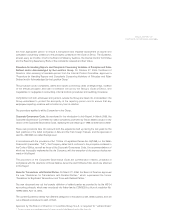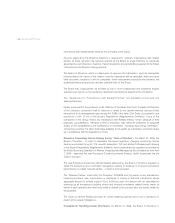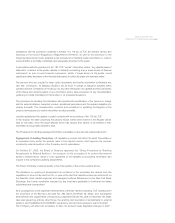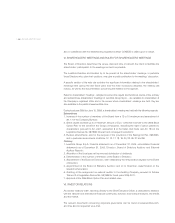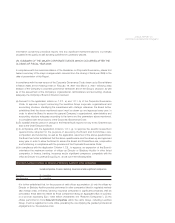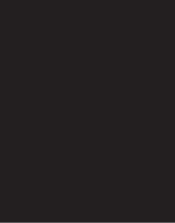LensCrafters 2006 Annual Report Download - page 80
Download and view the complete annual report
Please find page 80 of the 2006 LensCrafters annual report below. You can navigate through the pages in the report by either clicking on the pages listed below, or by using the keyword search tool below to find specific information within the annual report.properly collected and communicated to the Chief Executive Officer (CEO) and the Chief Financial
Officer (CFO), so that they can make appropriate and prompt decisions on the information to be
disclosed to the market.
The internal control system supervising the drawing up of the financial statements aims at ensuring
the reliability of the financial reporting, according to the applicable accounting principles.
The internal control system structure was defined consistently with the model provided by the
COSO report - i.e. the most frequently used model at the international level to define and assess
internal control systems - which provides five items (control environment, risk assessment, control
activity, information systems and communications flows, monitoring activities).
With respect to the most relevant companies of the Group (so called Material Control Unit), the
control procedures were conceived and their efficacy verified both at the general/cross level (entity
level controls) and at the single operational/administrative process level. With respect to the less
material companies, which became material when aggregated (so called Material When
Aggregated), the assessment was made at the general level of efficacy of the control system.
Among the controls at a cross level, the controls allowing to mitigate the risk of frauds are
particularly important. To this end, Luxottica has developed Anti-Fraud Programs & Controls
resulting from an in-depth risk assessment which initially mapped the possible ways of committing
afraud and then defined the necessary control procedures to reduce the risk of occurrence and/or
allow the identification of such frauds.
In addition to the definition and testing of the internal control system in compliance with the SOA
requirements, Luxottica has also identified the actions to be taken to guarantee its optimal
functioning going forward.
The entire system must be monitored at two levels: by the operational management presiding over
the significant processes and by the Internal Audit which, autonomously and according to an
approved intervention plan, must verify the effectiveness of the control procedures and refer to the
competent functions and bodies.
Furthermore, also on the basis of an ongoing comparison process with other companies listed on
the NYSE, the projected controls system must be optimized and simplified. Since 2007, on the
basis of the experience developed internally and of the independent evaluations expressed by the
external auditors, a constant monitoring procedure will be implemented to verify that no redundant
and/or secondary controls be carried out; which might in-fact render the process heavier without
essentially increasing the efficacy of the system.
Board of Statutory Auditors. The Board of Statutory Auditors, appointed by the Shareholders'
Meeting on June 14, 2006, will remain in office for three fiscal years and, in any case, until the
Shareholders’ meeting approving the financial statements for fiscal year 2008. It comprises three
standing Statutory Auditors (Messrs. Marco Reboa, Giorgio Silva and Enrico Cervellera) and two
alternate auditors (Messrs. Mario Magenes and Francesco Nobili).
According to the Company’s By-laws, Statutory Auditors are appointed by list voting (Art. 27,
paragraphs from 4 to 18, 21 and 22).
As provided for by the Italian regulations applicable to listed companies, the Board of Statutory
Auditors supervises: the observance of law as well as Company By-laws; compliance with proper
>80 | ANNUAL REPORT 2006


